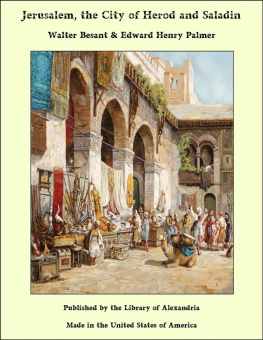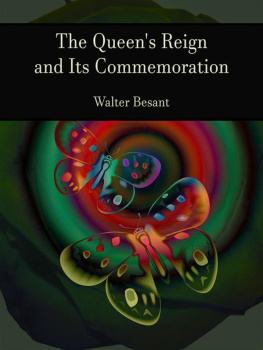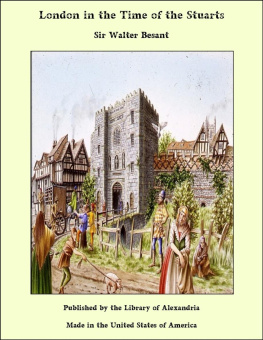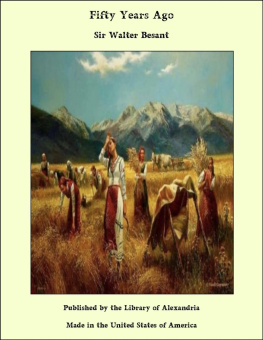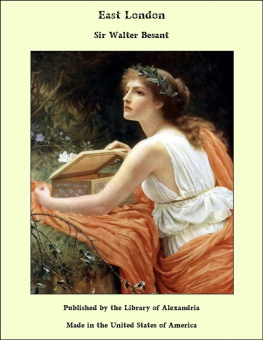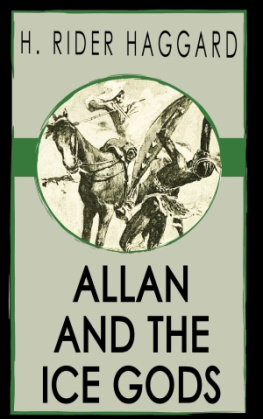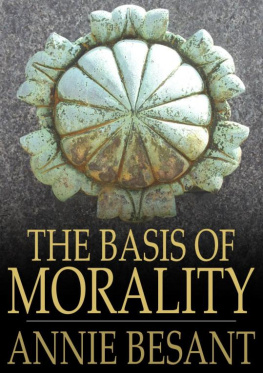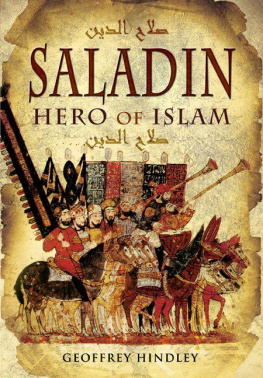Transcribers Note:
Footnotes have been collected at the end of each chapter, and are linked for ease of reference.
The features several pages of column-wise text and comment with some irregular indentation, which has not been retained.
Minor errors, attributable to the printer, have been corrected. Please see the transcribers at the end of this text for details regarding the handling of any textual issues encountered during its preparation.
Any corrections are indicated using an underline highlight. Placing the cursor over the correction will produce the original text in a small popup.
Any corrections are indicated as hyperlinks, which will navigate the reader to the corresponding entry in the corrections table in the note at the end of the text.
From a Photograph by C. F. Tyrwhitt Drake , Esq.] [Frontispiece.
THE DOME OF THE ROCK.
JERUSALEM,
THE CITY OF HEROD AND SALADIN.
BY
WALTER BESANT, M.A.,
CHRISTS COLLEGE. CAMBRIDGE.
AUTHOR OF STUDIES IN EARLY FRENCH POETRY, ETC., ETC., ETC.
AND
E. H. PALMER, M.A.,
LORD ALMONERS PROFESSOR OF ARABIC IN THE UNIVERSITY OF
CAMBRIDGE, AND FELLOW OF ST. JOHNS COLLEGE.
AUTHOR OF THE DESERT OF THE EXODUS.
ETC., ETC., ETC.
LONDON:
RICHARD BENTLEY AND SON,
NEW BURLINGTON STREET,
Publishers in Ordinary to Her Majesty.
1871.
[The Right of Translation is reserved.]
LONDON
PRINTED BY WILLIAM CLOWES AND SONS, STAMFORD STREET
AND CHARING CROSS.
PREFACE.
Very few words are needed to introduce this volume. It is intended to give a history of the city of Jerusalem from about the year 30 to the present time. This period includes the siege and capture by Titus, the last revolts of the Jews, the Christian occupation of three hundred years, the Mohammedan conquest, the building by the Mohammedans of the Dome of the Rock, the Crusades, the Christian kingdom, the reconquest of the city, and a long period of Mohammedan occupation, during which no event has happened except the yearly flocking of pilgrims to the Church of the Sepulchre, and an occasional quarrel among the monks.
There are here, surely, sufficient materials for the historian if only he knows how to use them.
For the modern period, that of the Christian kingdom, two sources of information exist, one, the contemporary and later chronicles of the Crusaders, written either in Latin or Langue dOil, and the other, the Arabic historians themselves. I have written my own part of the book from the former; to my colleague is due all that part (the Mohammedan Conquest, the chapter on Saladin, &c.) which has been taken from Arabic writers. Most of this has the great advantage of being entirely new, and now for the first time introduced to English readers. For my own share in the work, I claim no other novelty than the presentation of facts as faithfully as I could gather them, at first hand, and from the earliest writers.
There is nothing sacred about the actors in this long story we have to tell, and we have not thought it necessary to endeavour to invest them, as is generally done by those who write on Jerusalem, with an appearance of sanctity, because they fought for the City of Sacred Memories, or because they bore the Cross upon their shoulders. We have, on the other hand, endeavoured to show them as they were, men and women actuated by mixed motives, sometimes base, sometimes noble, sometimes interested, sometimes pure and lofty: but always men and women, never saints. The Christians in the East were as the Christians in the West, certainly never better, more often worse. If we have succeeded in making a plain tale, divested of its customary pseudoreligious trappings, interesting and useful, our design is satisfied.
One word more. There may be found, owing to the double source from which our pages are derived, certain small discrepancies in the narrative. We have not cared to try and reconcile these. Let it be remembered that the one narrative is Christian, the other Mohammedan.
W. B.
October, 1871.
CONTENTS.
| CHAPTER I. |
| Introductory | Page
|
| CHAPTER II. |
| The Siege of Jerusalem |
| CHAPTER III. |
| From Titus to Omar |
| CHAPTER IV. |
| The Mohammedan Conquest |
| CHAPTER V. |
| The Christian Pilgrims |
| CHAPTER VI. |
| The First Crusade |
| CHAPTER VII. |
| King Godfrey |
| CHAPTER VIII. |
| King Baldwin I. |
| CHAPTER IX. |
| King Baldwin II. |
| CHAPTER X. |
| King Fulke |
| CHAPTER XI. |
| King Baldwin III. and the Second Crusade |
| CHAPTER XII. |
| King Amaury |
| CHAPTER XIII. |
| King Baldwin the Leper |
| CHAPTER XIV. |
| King Guy de Lusignan |
| CHAPTER XV. |
| Richard Cur de Lion and the Third Crusade |
| CHAPTER XVI. |
| Saladin |
| CHAPTER XVII. |
| The Mohammedan Pilgrims |
| CHAPTER XVIII. |
| The Chronicle of Six Hundred Years |
| CHAPTER XIX. |
| Modern Jerusalem |
| APPENDIX. |
| On the Position of the Sacred Sites |
| Index |
JERUSALEM.
THE CITY OF HEROD AND SALADIN.
CHAPTER I.
INTRODUCTORY.
It is our object to write a book which may serve as a historical account, complete so far as it goes, of the principal events with which Jerusalem is concerned, from the time when its history, as connected with the Bible, ceases, till the present; that is to say, from the year A.D. 33 downwards. But it is difficult to take up the thread of the story at this date, and we are forced either to go as far back as Herod the Great, or to begin our narrative with the events which preceded the siege of Jerusalem by Titus. No date seems to us more ready to our hand than that of the death of Herod Agrippa. Even then we may seem beginning to tell a thrice told tale. The revolt of the Jews, their defeat of Cestius, the siege of Titus, are surely, it may be objected, too well known to require telling again. They are not well known, though they have been told again and again, and told with ten times the force, the vigour, the originality which we can put into these pages. But they are told here again because our central figure is Jerusalem. We have to show her first, in all her pride, the joy of the Jews, the visible mark of their greatness; and then we have to follow her through two thousand years of varying fortune, always before the eyes of the world,always the object of tender pity and reverence,always the centre of some conflict, the scene of some religious contention. Frequent as were the sieges of the city in the olden days, they have been more frequent since. Titus took Jerusalem, Barcochebas took it, Julius Severus took it, Chosroes, Heraclius, Omar, the Charezmians, Godfrey, Saladin, Frederick, all took it by turns,all after hard fighting, and with much slaughter.
There is not a stone in the city but has been reddened with human blood; not a spot but where some hand-to-hand conflict has taken place; not an old wall but has echoed back the shrieks of despairing women. Jew, Pagan, Christian, Mohammedan, each has had his turn of triumph, occupation, and defeat; and were all those ancient cemeteries outside the city emptied of their bones, it would be hard to tell whether Jew, or Pagan, or Christian, or Mohammedan would prevail. For Jerusalem has been the representative sacred place of the world; there has been none other like unto it, or equal to it, or shall be, while the world lasts; so long as men go on believing that one spot in the world is more sacred than another, because things of sacred interest have been done there, so long Jerusalem will continue the Holy City. That this belief has been one of the misfortunes of the human race, one of the foremost causes of superstition, some of the pages which follow may perhaps help to show. But, in our capacity as narrators only, let us agree to think and talk of the city apart, as much as may be, from its sacred associations, as well as from its ecclesiastical history.

